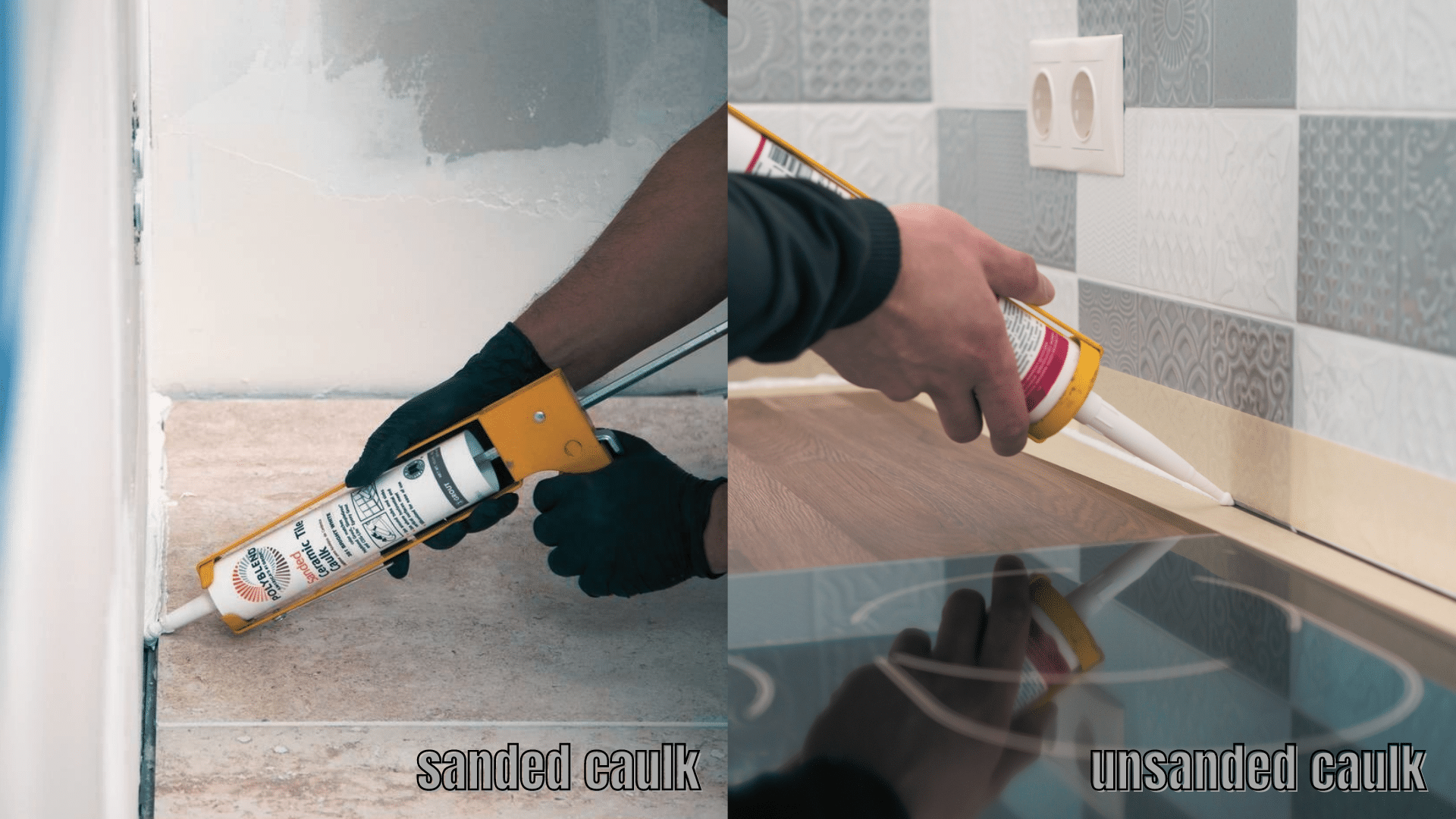If you're thinking of doing a kitchen backsplash or a bathroom tiling project– you may have to deal with the dilemma of using sanded or unsanded caulk. We talk to homeowners daily, and we often hear related questions such as: What exactly is the difference between the two? How do you determine the right caulk for your tiling job?
For starters, sanded caulk is composed of either acrylic, latex, or silicone with sand for added texture and bulkiness, whereas unsanded caulk lacks it. (Related: 6 Simple Steps To Remove Silicone Caulk From Tile) Unsanded caulk is smoother and preferable for joints less than ⅛ inches between the two. Sanded caulk is commonly used for larger tile joints.
Many homeowners remain uncertain about the variations of the two caulk types. Now, let's discuss the differences in detail to decide for yourself which is the right caulk type to use for your project.
Sanded vs. Unsanded Caulk: The Major Differences
True to its name, sanded caulk has the extra ingredient of sand. Since unsanded caulk tends to shrink after application, the presence of sand can effectively prevent this from happening.

Sanded caulk is mainly used to fill in gaps where shrinking caulk (unsanded) may result in poor adhesion. It may also be matched with the look of the grout. Sanded caulk may also be unable to resist mold growth, so it's not suitable for bathrooms and kitchens.
In contrast, unsanded caulk proves to be more flexible and has higher mold resistance. It is also available in several different colors to complement your decor. Refer to the table below for a quick rundown of sanded and unsanded caulk differences.
Sanded Caulk | Unsanded Caulk |
|---|---|
Bulkier and suitable for large tile joints (more than ⅛ inches) | Fine texture. Ideal for joints less than ⅛ inches |
Creates stronger joints with strong sand-bonds | Less brittle and lighter joints. It lasts longer, even in water |
Not a flexible tile-joint sealing material | Adjustable and suitable for vertical tiling |
May encourage mold and mildew growth | Waterproof and mold-resistant |
Best paired with sanded grout | Best paired with unsanded grout |
Properties of Sanded vs. Unsanded Caulk
Let’s discuss the different properties of sanded and unsanded caulk.
Which Caulk is Better: Sanded or Unsanded?
Technically, there is no correct answer to this question. Whether sanded or unsanded caulk is better will depend on the joints' thickness and location. It's more suitable to use sanded caulk for large joints with sanded grout. Meanwhile, unsanded caulk is better for narrow joints between tiles and counters.
Homeowners with a tight budget can choose sanded caulk, as the sand makes caulk bulkier to fill any spaces, so you're less likely to spend on more caulk products. For joints in the shower and kitchen, it's best to use unsanded caulk as it can handle moisture and temperature fluctuations. As a result, it minimizes the chances of cracks.
Now that you've grasped the significant differences between sanded and unsanded caulk, we hope that you can now make the best choice for your home improvement project! Always consider the task requirements, area of installation, size of joints, and expected foot traffic if you want to make an informed decision.
Frequently Asked Questions (FAQs)
Does sanded caulk need to be sealed?
Sanded caulk does not need to be sealed. Water-resistant properties of silicone, latex, or acrylic caulk do not change by adding sand to caulk. Although, using grout will require you to seal it right after application to avoid possible water damage.
How long does sanded caulk take to cure?
Twenty-four hours is the minimum time before sanded caulk can be exposed to any water. However, it may take longer to cure, depending on the thickness of the application and room temperature.
Can I paint caulk?
Yes, but some caulks can't be painted. Make sure to read the tube stating that it is paintable before purchasing it.
Can I sand caulk?
Sanding caulk may degrade the surface, and while this isn't as noticeable on sanded caulk, the look of your finished job can still be ruined.
